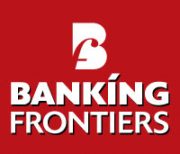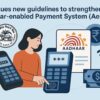Intro: Loan origination systems in banks and financial institutions have become a norm. And these institutions are deriving specific benefits by using such systems. A review by three senior bankers:
Pic: Shiv Kumar Bhasin, Ravindra Rao, Ravikiran Mankikar and graphics
While banks and financial services institutions today offer complex products that require very minute appraisals and assessments of the prospective customers, loan processing is one of the most intricate activities in these institutions. While most of these institutions have put in place loan origination systems (LOS) to support their loan application processing needs, it appears that the full potential of such systems are yet to be exploited. LOS employs workflow technology to control and monitor the processing of loans to cut the delays and inefficiencies associated with paper documents.
In banking lexicon, loan origination is defined as the process by which a borrower applies for a new loan and a lender processes that application. Origination generally includes all the steps from taking a loan application up to disbursal of funds (or declining the application). Then comes loan servicing, which covers everything after disbursing the funds until the loan is repaid. In fact loan origination is somewhat like a specialized new account opening process.
Banking experts list the necessary aspects of an effective LOS:
- It must have a structured workflow for automatic routing of applications for different loan products
- It must support multiple loan products and loan types and different origination channels
- It must interface with different external systems
- It should have provisions for internal credit checking, credit scoring and compliance checking
- It must have provisions for storing all the application details and offer status updates
- It must also support document imaging and archiving for various loan application-related documents
MULTIPLE SYSTEMS
At present, most institutions use multiple LOS catering to different departments of the institutions. After processing and the loans are approved, these systems are usually interfaced with the CBS to create a loan account for further servicing and maintenance. However, there are advantages in using single LOS that caters to the origination requirements across all departments. Taking this further, there could be a development of a stronger CBS with an in-built LOS, where the core system would contain a loan origination workflow in addition to the loan servicing modules provided within the core banking product.
While awaiting for this, it has to be emphasized that there are visible benefits in deploying a single origination system for all loan products. It allows banks to maintain all the loan application data in a single location. Thus, each department of the bank can operate autonomously if desired but can also access all the data for cross-selling, tracking and reporting. However, only few banks have adopted comprehensive LOS that enables them to process multiple loan types effectively serving as a single point of origination.
Shiv Kumar Bhasin, CTO, State Bank of India, emphasizes that banks must have a single LOS. Says he: “To maintain uniformity in appraisal, processing, risk mitigation and compliance of Bank’s system and procedures, single loan origination system is required.”
According to Ravindra Rao, EVP and COO, Fullerton India Credit Company, having a single LOS is beneficial for lending operations. “A consolidated view would allow banks/lending institutions to reduce credit and operational risks through availability of timely and accurate view of customer information right from the loan application stage. By using a single loan processing solution, one can optimize operational efficiency using straight-through processing. Further, by having an integrated solution, the need for interfaces reduces thereby optimizing costs. This also helps creating an agile infrastructure supporting growth and delivering scale,” says he.
SINGLE LOS
Some of the benefits of a single LOS are that it will lead to improved customer care through an intelligent, customized end-to-end loan solution, it allow banks to reduce credit and operational risk through access to and monitoring of a complete, timely and accurate view of customer information and analysis along with the enforcement of corporate and regulatory rules and processes within the lending cycle, it will provide a 360-degree view of the customer right from the loan application processing stage and banks can optimize their operational efficiency with straight through processing (STP) and process improvement.
Ravikiran Mankikar, CGM-IT, SVC Bank, explains that there are four parts to any loan proposal: (i) receipt of the proposal, (ii) initial assessment of the viability of the proposal, (iii) actual assessment, including documentation, viability study, risk evaluation and (iv) disbursement. “One of the important aspects in any functional LOS is to have a check on industry trends incorporated into the system. For example, today steel industry is not doing well. There is an inherent risk involved in offering credit to enterprises involved with this industry. So, there must be provision in the system to assess this market risk,” says he.
Bhasin says in State Bank of India LOS was launched during October 2009 for ‘P’ segment loans covering housing, auto, education and personal loans. Subsequently all personal segment products and its variants were made available in LOS during November 2013 as per business requirements. For SME & agri loans the LOS was launched during July 2013.
According to Rao, Fullerton had a rudimentary originating system when it commenced business operations in 2007. This was further customized to the company’s needs based on incremental business volumes, development of product suites and user requirements. Very recently, the company has moved to an industry-leading LOS with linear interfaces to facilitate timely and accurate decision-making.
IN-HOUSE DEVELOPED
At SVC Bank, like its CBS, which is in-house developed, there is an in-house developed LOS, which has been in place for the last 10 years. “This system has seen several upgrades. We have developed the system to be an automated system, for universal application across the bank with standardization across verticals. It actually facilitates looking at any proposal in an objective manner,” says Mankikar.
He mentions that the LOS has a proposal tracking system. “In fact, the process involves three working days – from the submission of proposal to the passing of the loan unless there are extraneous situations. So, from the point of actual lodging on a loan application to the point of disbursement of the loan, the whole process is monitored through the system and bottlenecks are identified and solved expeditiously. The whole system is centralized,” he adds.
Mankikar also mentions that in the case of retail loans, the procedure is comparatively simple as there is no need to do an assessment of the industry trends. There are parameters built into the system and if the applicant meets all the parameters, there will be no reason why the loan will not be sanctioned. Of course, risk mitigation aspects like verifying the customer’s loan repayment history, past delinquencies, multiple loan applications, defaults, frauds etc are built into the system. However, in the case of corporate loans, there is this industry analysis that needs to be undertaken, there is an assessment of the viability of the loan, and there is a proactive monitoring system to prevent the loan becoming a possible NPA. The whole process is automated.
PERSONAL VIEW
“Having said this, to some extent, lending is a personal decision based on the use of judgment as well as data that is available. However, there could be mistakes when one tends to bypass controls and make decisions based on selective judgement. This happens both in the public sector and private sector banks, although private sector banks can claim to have better controls. In the cooperative sector, lending is largely based on personal decisions, especially depending on the borrowers’ proximity to the directors of the bank concerned. In such situations, the controls put in place through the LOS are often bypassed. There is absolute lack of corporate governance norms in such banks and unless they strictly adopt these norms, it is difficult to correct the situation,” says Mankikar, pointing out the pitfalls.
RESPONSE TIME
What is the typical response time for various loan products once the customer gives in all the required information?
Says Rao:“Speed to customer is an important business attribute and this is embedded in our DNA. The customer has got choices and hence as a matter of prudence and prevailing regulations, we need to communicate our decisions to the customer. Having said this, we are extremely competitive in the markets and chosen segments that we operate.”
Bhasin says the response time varies from 1 day to 15 days depending upon the product type and other documents required for sanctioning and credit appraisal process of the loan. For housing loans, the bank is ahead of its competitors.
He talks about automation of the LOS: “Our LOS has been automated for the purpose of sourcing, processing and sanctioning of loan proposals. The use of paper is partly eliminated. Documentation received from the customer is being scanned and stored in digital and paper forms. I believe an ideal LOS should completely be on a digital platform with end to end process, including eKYC (no wet signatures, depending upon regulatory guidance).”
AUTOMATED
Rao says Fullerton’s LOS is a completely automated solution and has a robust workflow. “Use of paper has come down by about 40% since we still need documents from the customer like application form and KYC forms along with the bank statements. But the administrative aspects wherein there is use of paper has gone down sharply. Ideally, LOS should (a) have a structured workflow for automatic routing of loan application; (b) support multiple loan products ; (c) different origination channels ; (d) interface with external systems; (e ) create a database of all loan applications; (f) support imaging,” says he.
Mankikar, however, feels that no LOS can totally eliminate use of paper. For example, he says there is this legal requirement of maintaining original documents. To that extent, paper has to be used. Yes, the assessment, evaluation, appraisal, the various statges of sanctioning and final disbursement can all be without paper, but there has to be basic documentation.
That brings to the fore the use or rather non-use of paper. The objective of an LOS is to transform the whole loan origination process in order to achieve the objective of eliminating delays, errors, costs of paper and manual processes. Often, use of paper has been cited as a direct source of customer dissatisfaction; in fact it is considered as a root cause of creating business-losing inefficiencies. A study by IDC shows that as much as 37% of document processes in financial services are still driven by paper. Copying, faxing, scanning, printing and manual keying of data out of paper occur at every point of the loan process, from origination, through prequalification, underwriting, terms of agreement and acceptance, to final submission, approval, closing and ongoing servicing. In many institutions, while the loan process begins at the branch using digital systems, documents are retained and despatched to a central office. There are widespread inefficiencies in such a system.
DIGITALIZED
What new capabilities would they like to see in LOS applications?
Bhasin says LOS application should be completely digitalized with robust Document Management System (DMS) that can be accessed by all stakeholders during the credit appraisal process from intranet and internet. It should also be enabled to work on low bandwidth and high latent networks.
“I would ideally like the LOS applications to be more agile and intelligent enough to support digital initiatives with minimal customizations,” says Rao. “I guess when the software companies developed LOS, they have been pretty much conventional in terms of data entry being done and credit decisions following a compartmental approach. These days there are tablets or mobile devices that can host the application and this information can feed into the loan originating system directly. Alternatively, the app can be enabled to take online decisions,” says he.
Mankikar has a different perspective. Says he: “”In fact, the perception about LOS changes from bank to bank. It is all the more difficult to have a uniform package for all banks, especially in corporate lending. The policies may be different, the outlook on sector performance may be different. But what is noteworthy is that in an automated system, these perceptions can be incorporated by escalating the matrix.”
ENTERPRISE LOS
Can those LOS available in the market be described enterprise LOS? Is it necessary for LOS to be interfaced with CBS in order to facilitate an end-to-end transaction processing?
Rao says several CBS offer LOS as part of the entire suit and this is a preferred option provided a bank is taking the CBS from a tested partner. “I believe that the LOS should be interfaced with the CBS for several reasons. One should be able to consolidate all the ancilliary systems into one to drive cost efficiencies and deliver speed to customer. It is also cost-effective when we have one platform or one system at an enterprise level housing LOS, LMS and other solutions like de-duplication application, collections system, etc,” says he.
Bhasin, however, maintains that LOS systems currently available in the market are not really enterprise LOS. These systems need to support various flexible workflows for credit appraisal process for different products and different line of business. “I am of the view that LOS needs to interfaced with CBS to facilitate setting up of customer and loan accounts, as well as loan servicing needs, he says.
Mankekar believes that CBS is the first link between the bank and a customer. “So, if a customer puts in an application to say renew a loan or even apply for a loan, the CBS can throw very important information about the customer, his repayment history, etc. LOS sitting in isolation cannot have this critical information. Secondly, it could be possible to push the loan details into the CBS account and on a search these details about the customer and his entire transactional relationship can be accessed,” says he.
Bhasin says that data capture and processing module in an LOS is the most useful module. LOS data in the data warehouse helps a bank to generate cross sell analytics, says he.
Rao, however, feels that there is no specific module which is useful in isolation since the entire LOS is in the form of workflow. “We do cross-selling using the CRM platform which gets a feed on the account level information from the CBS,” says he.
ON A SAAS MODEL
Can LOS be availed of on a SaaS model?
Bhasin strongly believes that a bank cannot afford to have LOS application on a SaaS model unless the service provider offers data security/privacy/segregation and product has very versatile and user defined fileds/product attributes, rules engines and flexible workflow system to define/configure/customize the credit appraisal process.
Rao gives an indirect response: “In the traditional software world, software companies often sell ‘perpetual’ license and then later sell upgrades. In this model, customers pay for the software license upfront and then typically pay a recurring annual maintenance fee (about 15-20% of the original license fee). Those of us who came from this world would call this transaction a ‘cashectomy’ – the customer asks how much the software costs and the salesperson then asks the customer how much budget he has; miraculously, the cost equals the budget. Timing of revenue and expenses are perfectly aligned. Now compare that to what happens with SaaS. Instead of purchasing a perpetual license, the customer is signing up to use the software on an ongoing basis, via a service-based model – hence the term “software as a service”. Even though a customer typically signs a contract for 12-24 months, the company does not get to recognize those 12-24 months of fees as revenue upfront. The company incurred almost all its costs to be able to acquire that customer in the first place – sales and marketing, developing and maintaining the software, hosting infrastructure – up front. Many of these up-front expenses don’t get recognized over time and the timing of revenue and expenses are misaligned.
Mankikar, however, says banks, especially smaller banks, can look at having LOS on a Saas model.
What is the significance of interfacing LOS to credit information bureaus?
Bhasin says LOS is interfaced with all credit information bureaus, which helps the bank in knowing the credit history of the applicant and arriving at credit decision.
Says Rao: “One gets the credit behavior of the customer from the bureau real-time and therefore the genesis of timely, fast and accurate decisions.”
Mankikar says data from credit information bureaus is an important input in any LOS. “As I said earlier, the yardstics for approval may differ from bank to bank, and a person whose application was rejected by bank 1 may find it approved by bank 2. It is mandatory for banks to factor credit scores from four different credit information bureaus into their LOS in order to get a fair view about a prospective borrower. This is as far as retail borrowers are concerned. For corporate borrowers additional inputs from organizations like CMIE are to be incorporated in the system.”
Analytics form an integral part of an LOS. Rao says Fullerton has integrated LOS with a decision science engine which helps the company take accurate decisions. “Applications which do not meet our minimum credit requirements get automatically rejected and do not get into our network. Hence, we save the time (and the cost) of processing such applications.”
Bhasin says at the data warehouse level, where LOS data is available, analytics is generated to understand the customer demographic and cross sell/upsell potential.
Mankikar says SVC Bank uses analytics in a big way. “Using analytics, it is possible to understand patterns of defaults and take judicious decisions. Even demographic analytics is possible and delinquencies can be predicted using BI tools,” says he.
FRAUD PREVENTION
Finally, has LOS reduced the scope for fraud?
Says Rao: “Given the fact that LOS is an integrated workflow system, each of the data points get automatically validated thereby reducing the instances of fraud. Information to the stake-owners is available real time and if there is any inconsistency, then the fraud checks which get initiated outside of the system, provide timely feeders to the underwriters.”
According to Bhasin, use of LOS has reduced the scope of fraud due to customer dedupe and bank wide negative lists checks during credit appraisal process.
Manikar too says LOS affords a thorough assessment of a loan proposal. “In fact it is much more scientific than doing so in a manual mode. So to that extent, it can be described as a scientific process and in such circumstances, scope for fraud is very limited,” he adds.







